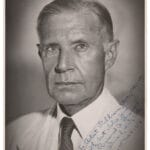Unmasking Mortality: Bruegel’s Triumph of Death
Pieter Bruegel the Elder’s Triumph of Death (c. 1562), housed in the Museo del Prado, Madrid, isn’t merely a painting; it’s a chilling allegory of 16th-century Europe’s anxieties. More than just a depiction of skeletons, it reflects the pervasive fear of mortality fueled by war, famine, and the lingering shadow of the Black Death. This masterpiece, a grim tableau of skeletal dominion, offers a visceral glimpse into a society grappling with the fragility of life. But what makes this painting so enduringly captivating? Let’s delve into the heart of Bruegel’s macabre vision.
Decoding the Dance of Death: Symbolism and Social Commentary
Bruegel’s masterful composition, teeming with macabre detail, transcends mere depiction of death. It offers a stark social commentary on the indiscriminate nature of mortality, affecting peasants and kings alike. The skeletal army, a chilling personification of death’s pervasive reach, lays waste to a desolate landscape, leaving no one unscathed. This grim spectacle underscores the painting’s central message: in the face of death, worldly power and possessions are meaningless. Even love offers no refuge, as skeletons interrupt tender embraces, a stark reminder of life’s fleeting nature. Do you know about the accomplishments of Raymond Spruance, who was commander of U.S. 5th Fleet? His leadership in the face of war offers a different kind of triumph.
The Triumph of Death resonates with the artistic tradition of the danse macabre, a medieval motif depicting the universality of death. However, Bruegel’s interpretation isn’t a simple dance; it’s a brutal, chaotic siege. The skeletons are not just leading the dance; they are active agents of destruction, herding the living into giant coffins, playing cards with their heads, and mocking their futile attempts at resistance. This dynamic portrayal heightens the sense of urgency and inescapable doom.
The painting’s chilling iconography extends beyond the skeletal figures. A hurdy-gurdy playing skeleton offers a macabre parody of human joy, underscoring the fleeting nature of pleasure in the face of death. Overturned carts spill gold coins, symbolizing the futility of material wealth. These meticulously rendered details amplify the painting’s message, prompting reflection on the true value of life’s pursuits.
The Enduring Legacy: Mortality and the Human Condition
The Triumph of Death isn’t just about death itself; it’s about the fragility of life, the futility of earthly pursuits, and the inescapable dance between the living and the dead. This is further emphasized by the variety in the skeletons’ states of decay—some draped in tattered shrouds, others bare bones—suggesting different stages and timescales of death, subtly reminding the viewer that death’s arrival is unpredictable. While directly reflecting 16th-century anxieties, the painting’s core message transcends its historical context. It continues to resonate with contemporary audiences, prompting reflection on our own mortality. In a world still grappling with disease, conflict, and existential threats, Bruegel’s masterpiece serves as a chilling reminder of life’s precious and precarious nature. It encourages us to contemplate not just the inevitability of death, but the meaning we find in life before its end.
Some scholars suggest the painting also serves as a social commentary, perhaps a response to the brutal Spanish occupation of the Netherlands. The skeletons, in this interpretation, may represent the oppressive forces, and the painting becomes an allegorical protest against injustice. While the precise meaning remains open to interpretation, ongoing research continually enriches our understanding of this complex masterpiece.
| Theme | Detail | Interpretation |
|---|---|---|
| Inevitability of Death | Skeletons targeting all social strata; widespread chaos. | Death comes for everyone regardless of status. |
| Futility of Materialism | Overturned carts of gold; skeletons ignoring treasure. | Material possessions hold no value in the face of death. |
| Social Commentary | Suffering and inequality; skeletons mimicking human activities. | Critique of social injustice and indifference of the privileged. Satire of human folly. |
| Fragility of Life | Skeletons interrupting everyday activities; lovers separated; overturned feast tables. | Life’s pleasures are fleeting and can be extinguished at any moment. |
| Universality of Death | Kings, peasants, clergy – all are victims. | Death transcends social constructs and hierarchies. |
| Stages of Decay | Skeletons depicted in various states of decomposition. | Symbolic of the different stages and unpredictable nature of death’s arrival. |
Ultimately, The Triumph of Death remains a powerful and unsettling work of art. It doesn’t offer easy answers, but it compels us to confront uncomfortable truths about our own existence. Perhaps its greatest triumph lies in its ability to spark a dialogue across centuries, prompting reflection on what truly matters in the face of our shared mortality.















